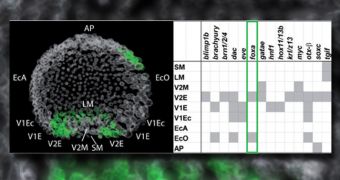Though numerous studies have been conducted on animal embryos over the years, experts have failed to grasp the full complexity of the mechanisms at work in creating a new individual of a certain species. A new study brings that a little bit closer to reality.
The work was focused on embryos, the undeveloped stage that follows conception. Past studies have determined that organisms existing in this stage of development are affected by signaling processes.
What the studies did not provide was a framework in which all these processes fit together. This is exactly what researchers at the California Institute of Technology did in their new investigation
Signaling processes are literally messages that tell cells when and how to express certain genes. Their end goal is to make these cells become certain parts of individual structures, such as skin, organs, bones, muscles, neural systems and so on.
In the new study, which was carried out on embryos belonging to sea urchins, the Caltech researchers looked at how a specific agglomeration of cells were coerced into becoming part of the endoderm.
This is the early domain of the embryo that eventually goes on to form the gut, the researchers say. The work is detailed in a paper entitled “A gene regulatory network controlling the embryonic specification of endoderm,” which appears in the may 29 online issue of the top scientific journal Nature.
“If you only look at the genetic information of cells in an embryo, they all have the same genome and they all start from the single-cell zygote,” explains Caltech senior postdoctoral scholar Isabelle S. Peter, who is also a coauthor of the new study.
“But then cells start to divide and, at some point, these cells are no longer identical in the genes that they express. We wanted to know how this process is achieved – how differences are established in cells in the right place and at the right time,” she goes on to say.
The gene regulatory network (GRN) was found to be the critical element here. This is a grid of regulatory genes, the most important genes in the body. They are in charge with controlling the expression or suppression of other genes.
Figuring out what's going on in the embryo “is like you are building a complicated edifice,” says the Caltech Norman Chandler professor of cell biology Eric H. Davidson, also a coauthor of the study.
“And before anything is actually there, the building instructions have already been handed to all the workers. They all know what they are going to have to do once the bulldozer comes in and starts moving earth around,” he concludes.
“Basically everything that happens in us, or in any animal during development, is encoded in genomic regulatory instructions. Now we have an explanation as to how that works, which is very exciting. We can only move forward from here,” the expert adds.
The Swiss National Science Foundation and the US National Institutes of Health funded this study.

 14 DAY TRIAL //
14 DAY TRIAL //